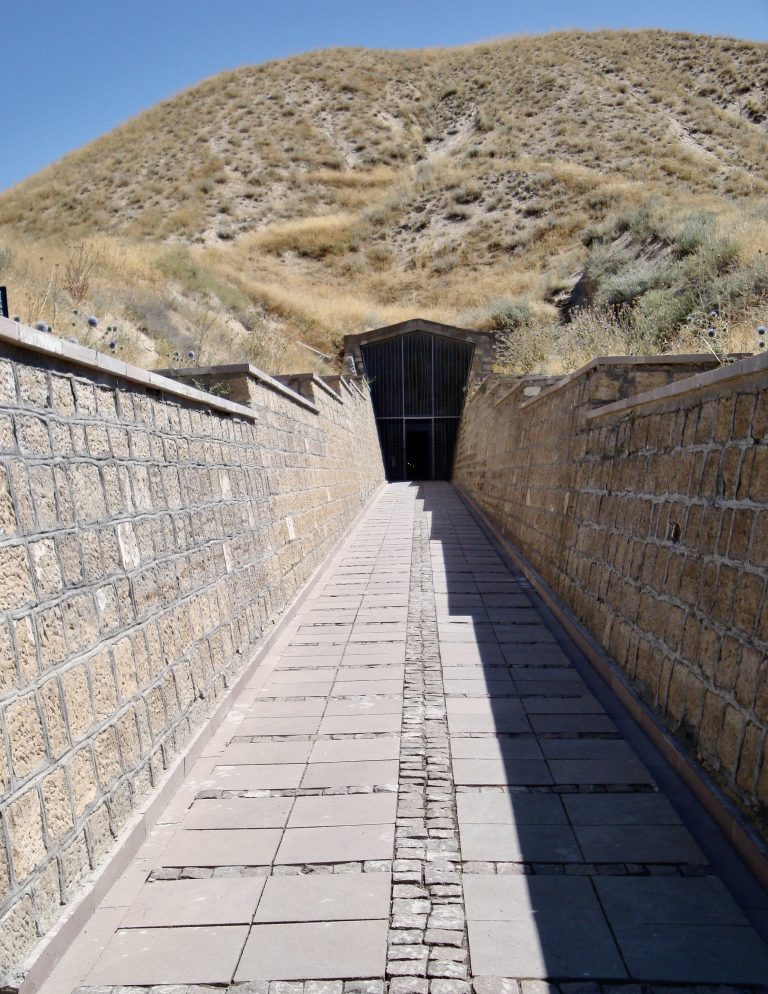Of the many peoples who inhabited Anatolia in the pre-Graeco-Roman period the best known are probably the Hittites whose ancient capital, at Hattuşa, is now one of Turkey’s world heritage sites. Not quite so well known are the Phrygians who took over from them in power in much of Central Anatolia from the 12th century BC onwards. Indo-Europeans who probably first emerged in the Balkans, the Phrygians may have been included amongst the mysterious “Sea Peoples” who are thought to have overwhelmed the Hittites. Alternatively, they may just have stepped into the void created by the collapse of the Hittite Empire. The full story is yet to be told.
The Phrygians made their capital at Gordion, near the small modern town of Polatlı, but their influence extended across much of Anatolia. To the east they rubbed up against the Urartians, to the west against the Lydians into whose kingdom they were eventually absorbed. The independent Phyrgian state is thought to have come to an end around 675 BC when invading Cimmerians are believed to have destroyed Gordion.
In their heyday the Phrygians had their own language (which may have survived into the seventh century AD), their own style of dress typified by a floppy Phrygian cap and their own pantheon of gods and goddesses, amongst whom Kybele, the Mother Goddess, held such importance that the Greeks later identified her with their Artemis.
Several famous stories, mostly mythical, are associated with Phrygia. The first concerns King Midas who is said to have prayed that everything he touched would turn to gold, forgetting that this would include his food, his drink and even his daughter. In despair Midas prayed to be relieved of his gift and was instructed by the god Dionysius to wash in the Pactolus (Sart Çayı) river. As soon as he did this, the gift passed to the water, thus supposedly explaining the gold that was later found in the river.
A second story tells how King Midas was one of the adjudicators at a musical competition between the gods Pan and Apollo. When the king was foolish enough to prefer Pan’s pipes to Apollo’s lyre, Apollo took his revenge by giving him donkey’s ears. From then on the king kept his head covered to conceal his disgrace. Only his barber got to see the shameful ears and eventually, unable to keep the secret any longer, he rushed down to the river, dug a hole and whispered into it that “King Midas has ass’s ears”. Of course the reeds that grew up on the spot have been whispering the same story as the wind whistles through them ever since.
Finally, Gordion itself was associated with a much later story relating to Alexander the Great who passed through in 333 BC by which time the old Phrygia had become a satrapy (province) of Persia. In the old palace he found an oxcart that had originally been brought into town by a peasant named Gordias whom an oracle had decreed should be the next king of Phrygia. The cart was secured with a knot and it was said that whoever eventually untied it would go on to become the ruler of all Asia. No more able to untue it than anybody else, Alexander solved the problem of the Gordion Knot by slicing through it with his sword.
For those looking for reminders of the Phrygians the first stop has to be Gordion, but almost equally interesting if much less visited is the small town of Midas Şehri, near Afyon. In the surrounding Phrygian Valleys (Frig Vadisi) there are many small reminders of the Phrygians. Finally, it’s worth paying a quick visit to Pessinus, a minor archaeological site near Sivrihisar that also dates back to Phrygian times.
The most important finds from Gordion, including some magnificent metalwork, are housed in the Museum of Anatolian Civilisations in Ankara.
Read about the most important Phrygian sites in Turkey: Best Phrygian Sites

